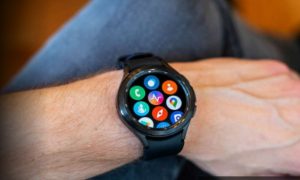The aging and deterioration of bridges can now be tracked thanks to new technology developed by the Korea Institute of Civil Engineering and Building Technology (KICT), according to a new study.
Also Read- Samsung’s minimalist Frame TV just got a $300 discount
The development of these data, network and artificial intelligence (AI) (D.N.A.) technology has been designed to help predict damage levels to bridges so appropriate maintenance can be put in place.
The findings by researchers at KICT came from a peer-reviewed study published in the academic journal Applied Science aimed at improving the sustainability of critical infrastructure in South Korea and across the globe.
Why do we need to track the aging of bridges?
Bridges are one of the most important elements of infrastructure throughout the world, being a key part of travel and transportation. These help link areas that would otherwise be separated by obstacles such as canyons and rivers while also helping streamline transportation networks. In other words, bridges are some of the most essential arteries of global and local travel and commerce.
However, bridges themselves are not invincible and some have been known to get damaged or collapse, especially when aged. This is because aging tends to erode a bridge’s durability, function and structural safety.
Also Read– How to Powerwash (factory reset) a Google Chromebook

Overall view of the Tagus river bridge and the city of Lisbon, Portugal (credit: REUTERS)
The biggest factor behind this aging is when the reinforced concrete deteriorates due to the infiltration of certain harmful substances from the environment like carbon dioxide and seawater.
This is known as concrete carbonation, and it can trigger reactions from other chemicals that can cause the bridge material to corrode.
Sure, these can be repaired, but this can be expensive and time-consuming. But this could be averted if measures were taken preventatively, reinforcing the bridge in advance before the deterioration becomes so severe.
Also Read– Two million air fryers recalled over burn hazard
As such, being able to track the degree to which a bridge is aging can help determine safety measures and capacity limits and optimize maintenance.
In 2021, around 12.5% of Korean bridges were older than 30 years old. However, within the next decade, this number is expected to more than double, increasing in the next decade to 39.3% by 2031. By 2041, these numbers are expected to rapidly spike to 76.1%, researchers say.
These predictions were made possible by the accumulation of data and newly-developed technology.
A research team from KICT’s Department of Structural Engineering Research has accumulated more than 5 million different data elements regarding the age progression of bridges from 2021 to 2022.
An AI learning model was applied to the provided data, revealing a prediction curve algorithm that can predict the spread of damage over time, inclusive of a carbonation model of the bridges. This technology was deemed credible after securing further data on bridges using onsite from data that looked at the environmental impact of Korea.
This bridge aging prediction technology included AI technology to analyze aging processes in order to predict potential future damage to bridges. KICT researchers say that the aging level assessment algorithm stood at 90.8% by the end of 2022, and is expected to improve even further to an astounding 95% by 2023.
Also Read– Bowers & Wilkins PI7 S2 review: a new level of premium?
With experiments proving the validity of the technology, KICT hopes to provide results from their data to different customers who look to ensure bridge safety.
This will not only save money on bridge maintenance and repair, but it will also make it far more efficient and could potentially save lives by averting bridge disasters.





























